Building Operations & Maintenance
Make Buildings Smart with a BOS and Cloud-Supervisory Platform
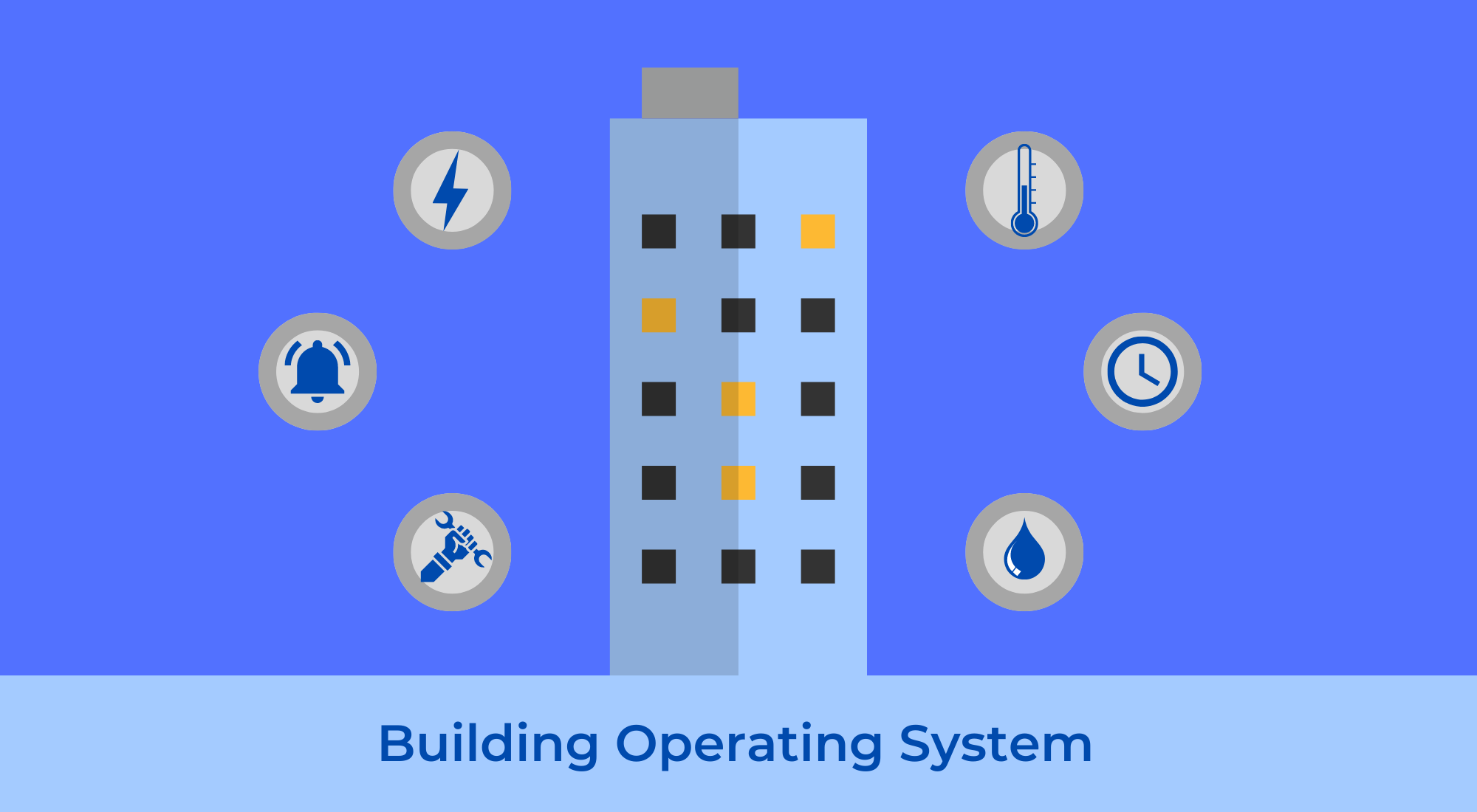
A building operating system (BOS) is a computer-based system that controls and monitors the mechanical, electrical, and communication systems to provide a comfortable, safe, and efficient environment for the occupants and optimize the performance of the building's systems.
Building operating systems may be accessed and controlled through a central control panel or a web-based interface and integrated with other building management systems. Read More Best Building Management Software
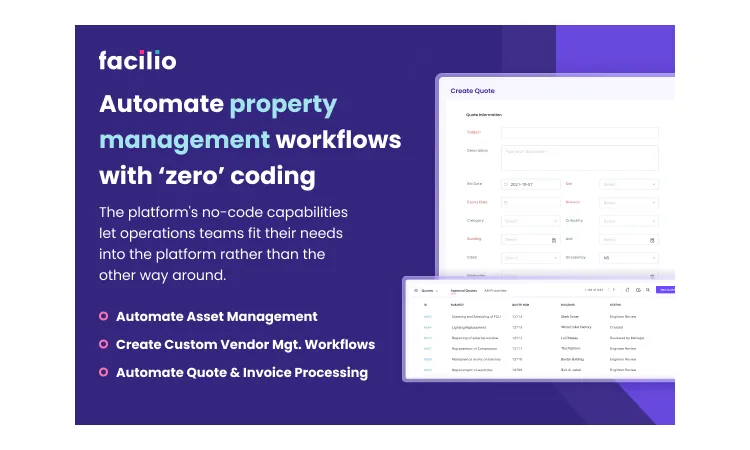
A brief history of building operating systems
The concept of a building operating system (BOS) dates back to the 1960s when the first building automation systems were developed.
These early systems were used to control buildings' heating, ventilation, and air conditioning (HVAC) systems and were typically controlled through a central panel or terminal.
In the 1980s and 1990s, the development of personal computers and the Internet led to the creation of more advanced building operating systems that could be accessed and controlled remotely.
These systems also began to include additional functions such as lighting control, security, and energy management.
In the 2000s and 2010s, the proliferation of the Internet of Things (IoT) and the development of smart buildings led to the creation of even more advanced building operating systems that could collect and analyze data from various sensors and devices throughout the building.
These systems also began incorporating features such as predictive maintenance, real-time analytics, and integration with other building management systems.
Today, building operating systems are widely used in commercial, institutional, and industrial buildings and are integral to modern building management.
Suggested read: Smart building success needs a new & improved system integration model: Here’s why
What are building operating systems used for?
The primary role of a building operating system (BOS) is to control and monitor the mechanical, electrical, and communication systems in a building to provide a comfortable, safe, and efficient environment for the occupants.
This may involve controlling and regulating the building's temperature, humidity, and air quality, as well as managing the lighting and power systems.
A building operating system may also be used to optimize the performance of the building's systems to reduce energy consumption and operating costs.
This involves collecting data from sensors and devices throughout the building, analyzing it, and using it to adjust its systems in real time.
In addition to controlling and monitoring the building's systems, a building operating system may also be used to manage maintenance and repairs, track the status of equipment and systems, and generate reports on the performance of the building.
Some building operating systems may also be integrated with other building management systems, such as security, energy, and maintenance management systems.
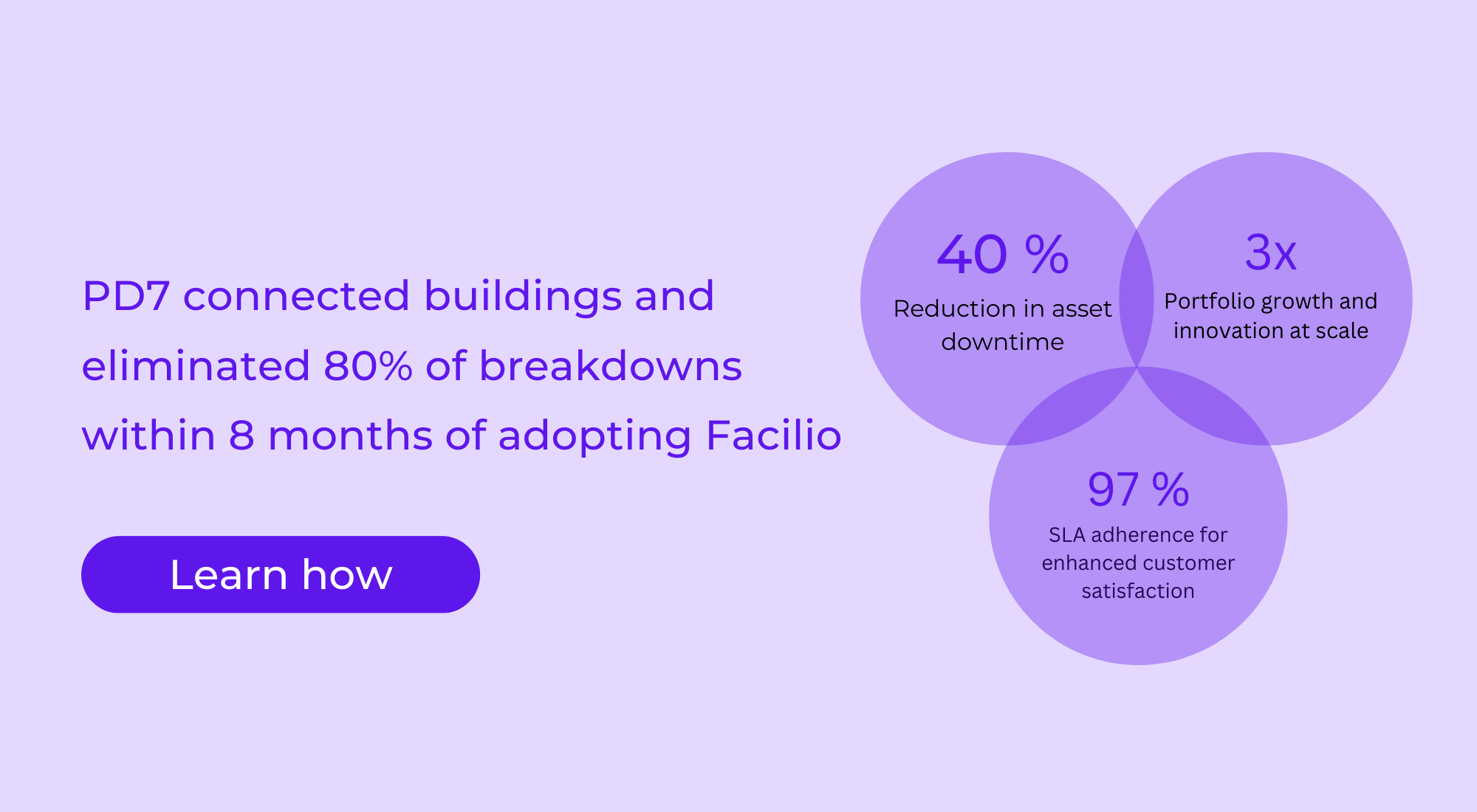
What goals does a building operating system help you achieve?
There are several compelling reasons to use a building operating system (BOS) in a building:
- Improved comfort: A BOS helps ensure that the building's mechanical, electrical, and communication systems operate in a way that provides a comfortable environment for the occupants. This may involve controlling the building's temperature, humidity, and air quality, as well as managing the lighting and power systems.
- Enhanced safety: A BOS also helps to ensure the safety of the building's occupants by monitoring and controlling the building's systems, such as fire protection, security, and emergency lighting.
- Reduced energy consumption: A BOS is used to optimize the performance of the building's systems to reduce energy consumption and operating costs. This may involve collecting data from sensors and devices throughout the building, analyzing it, and using it to adjust its systems in real time.
- Improved maintenance: A BOS is also used to manage maintenance and repairs, track the status of equipment and systems, and generate reports on the performance of the building to improve the overall maintenance and operation.
- Enhanced integration: Some building operating systems integrate with other building management systems, such as security systems, energy management systems, and maintenance management systems, to provide a more comprehensive and integrated approach to managing the building.
Using a building operating system improves the comfort, safety, efficiency, and overall management of a building, ultimately leading to cost savings and a better experience for the occupants.
Read also:
A Comprehensive Guide to Maintenance KPIs
What is Pre-Startup Safety Review?
Do you need a building operating system for efficient O&M management?
Operations and maintenance (O&M) can be carried out with or without a building operating system (BOS).
Without a BOS:
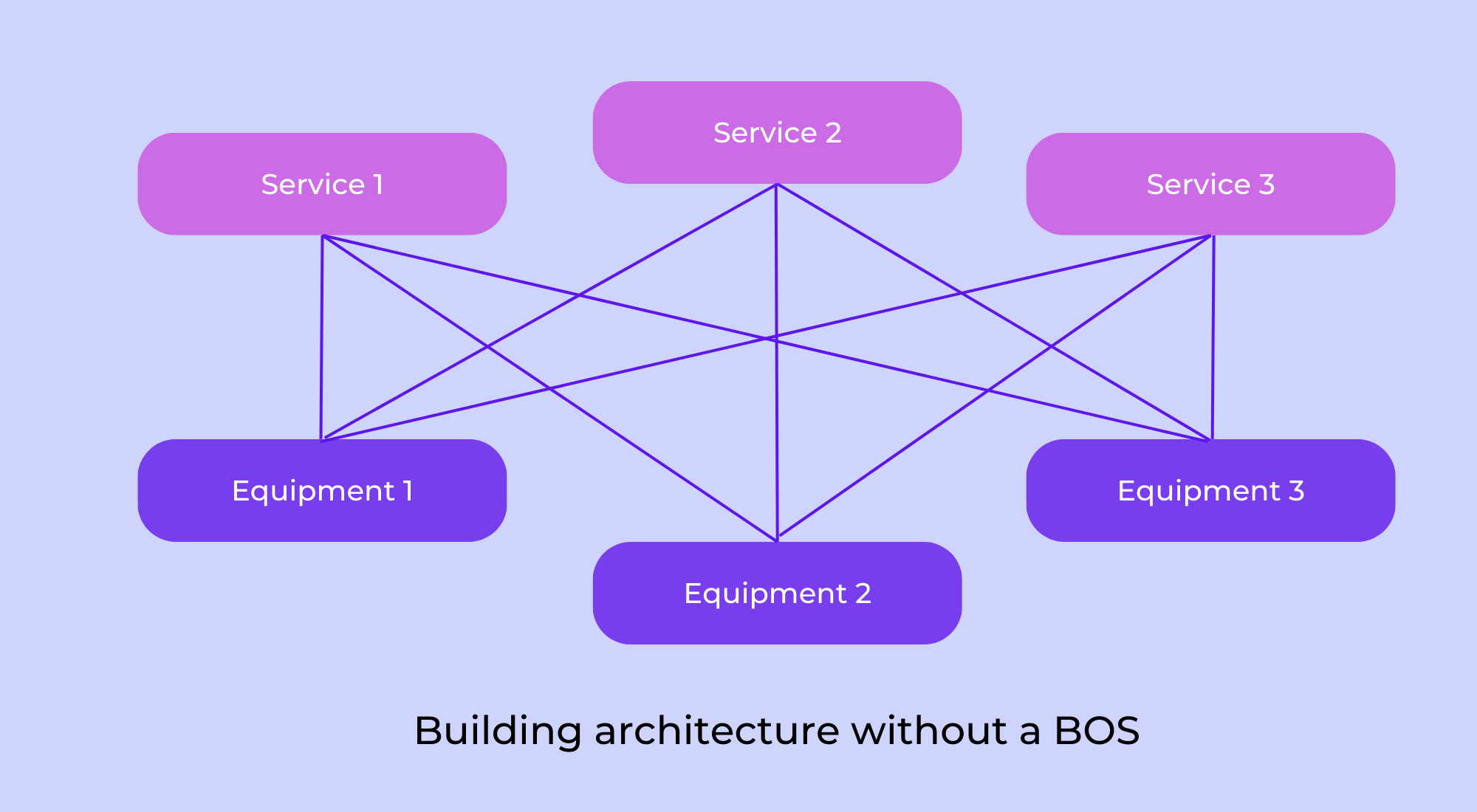
- Manual monitoring: Building staff can manually check and monitor the building's mechanical, electrical, and communication systems and make adjustments as needed.
- Maintenance logs: Building staff can keep track of maintenance and repair tasks using physical logs or spreadsheets and schedule repairs and maintenance as needed.
- Energy management: Building staff can manually turn off lights and equipment when not in use and use energy-efficient equipment and appliances to reduce energy consumption.
- Safety measures: Building staff can manually check and maintain safety equipment such as fire extinguishers and smoke detectors and implement emergency procedures in case of an emergency.
With a BOS:

- Automated monitoring: A BOS can automatically collect and analyze data from sensors and devices throughout the building and provide alerts when maintenance, repairs or replacements are needed.
- Predictive maintenance: A BOS can use data analytics to predict when maintenance or repairs are needed and schedule them in advance.
- Energy management: A BOS can optimize the performance of the building's systems to reduce energy consumption and associated costs with advanced energy management methods. Learn more Building Energy Management Software
- Safety measures: A BOS can monitor and control the building's systems to ensure the safety of the occupants, such as fire protection, security, and emergency lighting.
Using a BOS can provide a more efficient and comprehensive approach to O&M, with the added benefits of automation, data analytics, and integration with other building management systems.
Read also:
A Quick Guide to Avoid Getting Pencil Whipped!
How to perform facility condition assessment?
Who benefits from using a BOS?
Several groups benefit from a building operating system (BOS) or are considered stakeholders in the use of a BOS:
- Building occupants: A BOS helps provide a comfortable, safe, and efficient environment for the occupants of the building, which improves the overall quality of life for those living or working in the building.
- Building owners and managers: A BOS helps optimize the performance of the building's systems and unlock cost savings for the building owner or manager. A BOS also helps improve the overall maintenance and operation of the building, increasing the property's value.
- Building technicians and maintenance staff: A BOS helps automate many of the tasks involved in maintaining and repairing the building's systems, which makes their jobs easier and more efficient.
- Environmental groups: A BOS helps organizations achieve net zero goals, which positively impacts the environment by reducing greenhouse gas emissions.
- Regulators and policymakers: Governments and regulatory agencies may be interested in using BOS in buildings to promote energy efficiency and reduce greenhouse gas emissions.
- Investors: Investors may be interested in the use of BOS in buildings as a way to improve the sustainability and efficiency of the building, which increases the value of the property.
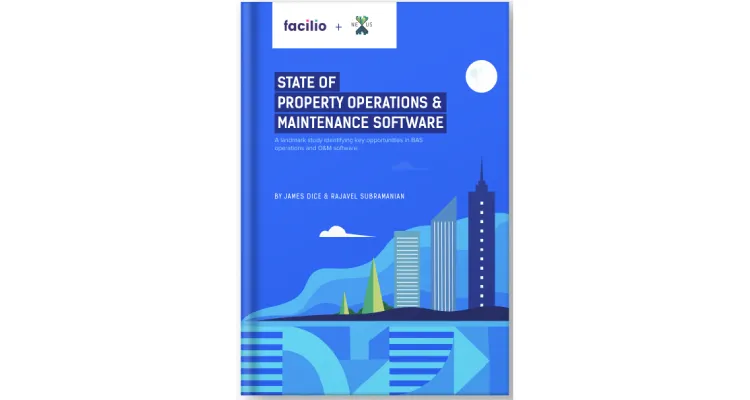
How does BOS help make buildings "smarter"?
A building operating system (BOS) enables a building to become "smarter" by providing a range of advanced features and capabilities that optimize performance across buildings and asset classes.
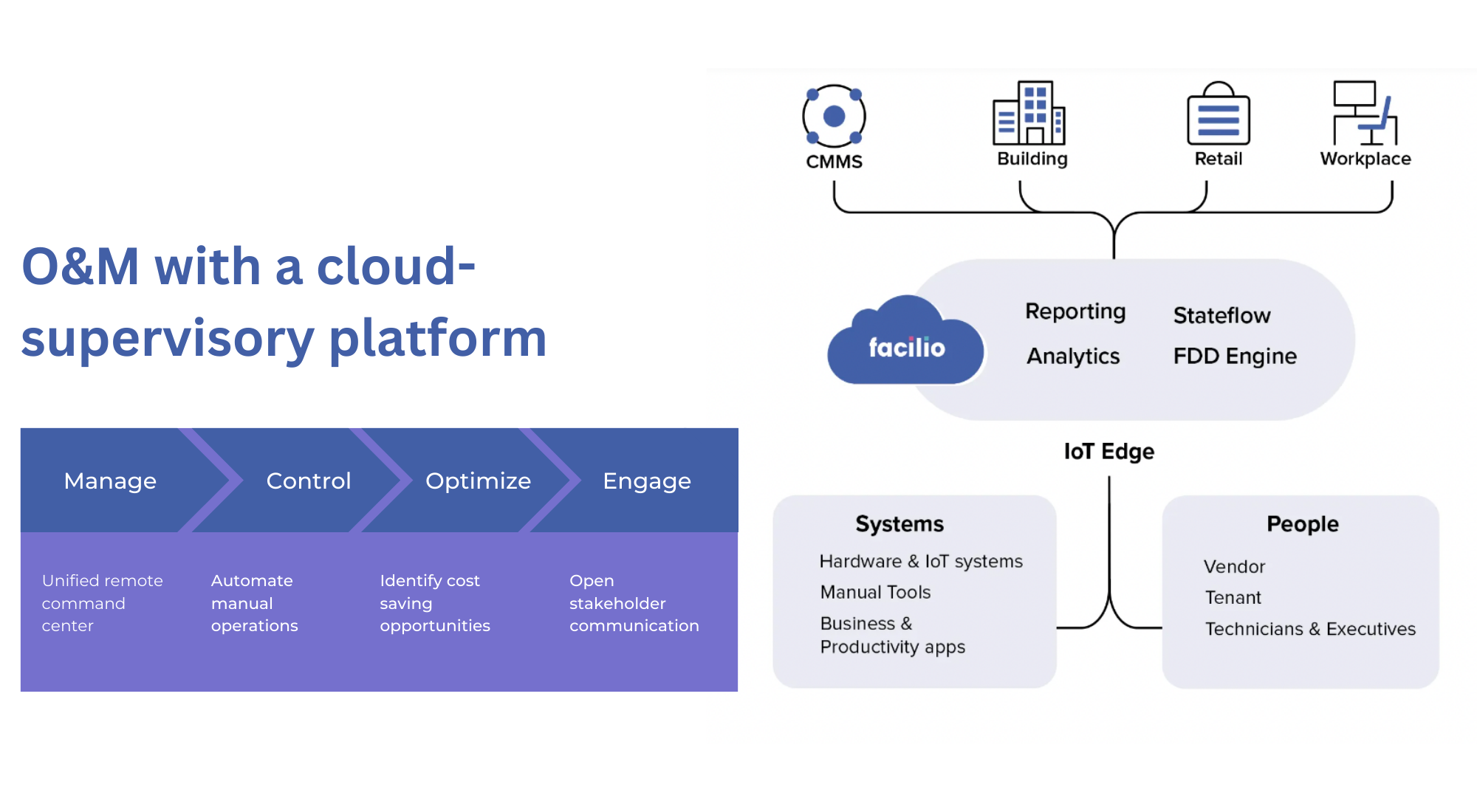
Some of the ways in which a BOS makes a building smarter include:
- Data collection and analysis: A BOS can collect and analyze data from sensors and devices throughout the building, which can provide valuable insights into the performance of the building's systems and help to identify opportunities for improvement.
- Automation: A BOS can automate many of the tasks involved in managing the building's systems, such as monitoring, maintenance, and repairs, which can improve efficiency and reduce the workload for building staff.
- Integration: A BOS can be integrated with other building management systems, such as security systems, energy management systems, and maintenance management systems, which can provide a more comprehensive and integrated approach to managing the building.
- Remote access and control: A BOS may offer a web-based interface or mobile app that allows building staff or occupants to access and control the building's systems remotely, which can improve convenience and flexibility.
- Predictive maintenance: A BOS can use data analytics to predict when maintenance or repairs are likely to be needed, and schedule them in advance, which can help to improve the overall maintenance and operation of the building.
A BOS makes a building smarter by providing advanced features and capabilities that can optimize the performance of the building's systems and enhance the overall management of the building.
Suggested read: Building automation needs innovation big time (and it’s all coming together finally)
Tips to make the most of your BOS
Adding a cloud-supervisory platform like Facilio enables maintenance professionals to get a bird's eye view of their portfolio performance and unlock efficiencies without significant upfront investments.
Cloud supervisory platforms can help BOS in several ways:
- Remote access: Cloud supervisory platforms provide a web-based interface or mobile app that allows building staff or occupants to access and control the BOS remotely, which improves convenience and flexibility.
- Scalability: They also provide the necessary infrastructure to support the data storage and processing needs of the BOS, which is particularly useful for buildings with a large number of sensors and devices.
- Data security: Platforms facilitate robust security measures to protect the data collected and processed by the BOS, which is particularly important in cases where the data includes sensitive information such as security camera footage or personal information about building occupants.
- Data analytics: They provide necessary resources and tools to perform advanced data analytics on the data collected by the BOS, which helps identify patterns and trends and provides valuable insights into the performance of the building's systems.
- Integration: Platforms facilitate the necessary infrastructure to support the integration of the BOS with other building management systems, such as security systems, energy management systems, and maintenance management systems, which provide a more comprehensive and integrated approach to managing the building.
Further, they put you on the path to more advanced ways of delivering high-performing portfolios by enabling maintenance teams to make data-driven decisions and facilitating integrations with advanced technologies and infrastructure.
Looking for CaFM software that connects your people, processes, and systems to supercharge your digital transformation efforts? We've got you covered.



